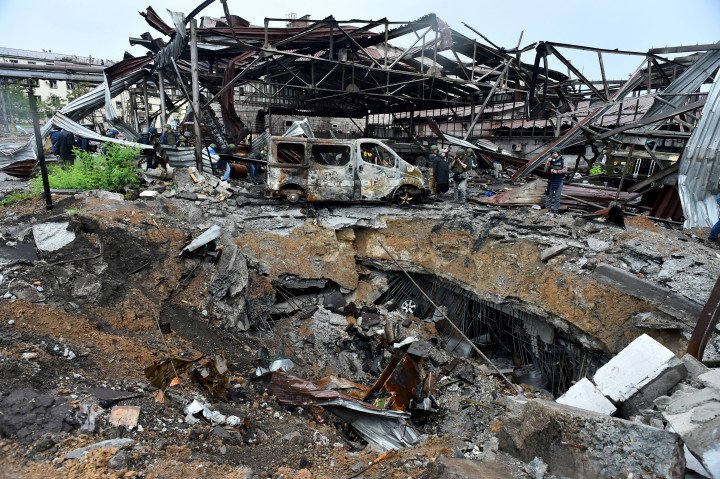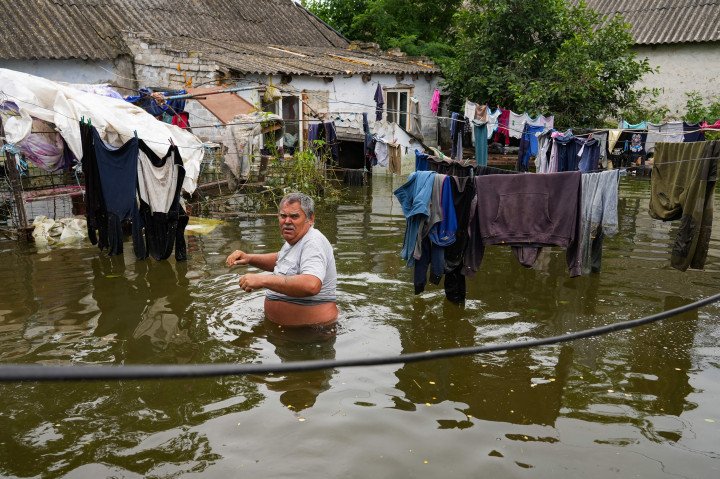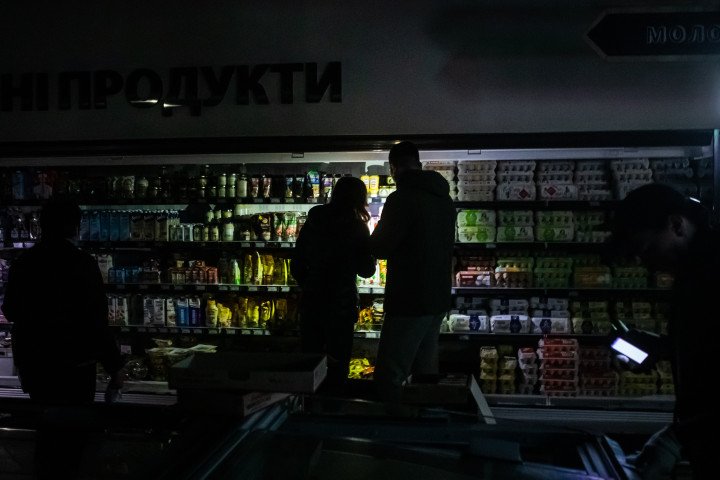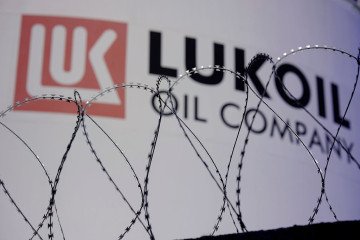- Category
- Business
Which Economic Sectors Have Been Hit Hardest by Russia’s War in Ukraine?

Russia’s invasion of Ukraine has driven millions of Ukrainians into poverty. While economic hardship pales in comparison to the loss of life, Ukraine has still faced immense economic challenges due to Russia’s aggression. Which sectors are affected most and what are the figures?
The total amount of infrastructure damage caused to Ukraine by the Russian invasion exceeds $157 billion US dollars as of January 1, 2024, the Kyiv School of Economics (KSE) reported on August 19.
Russia damaged and destroyed almost 250,000 buildings as of January 2024, with 222,000 being family homes. The total estimated damage is valued at $58.9 billion, according to KSE estimates.
Since the fall of the Soviet Union, Ukraine had been building and making vast progress economically. In 2022, as a result of Russia’s full-scale invasion, Ukraine’s gross domestic product (GDP) fell by around 30%, Ukraine’s largest recession in post-Soviet history. It’s estimated that Ukraine will only reach its pre-war level GDP in 2030.
Poverty in the country soared from 5.5% of the population to 24.2% in 2022, according to the World Bank. Ukraine is one of the world's largest food exporters in the world, yet now, is one of the most food insecure countries globally.
One in three Ukrainian households is food-insecure, rising to one in two in some areas of the East and South, the United Nations (UN) World Food Programme estimates.

Job losses have been a factor in Ukraine’s deprivation. Destruction of infrastructure, agriculture, ports, factories, and manufacturing have all contributed to the slowdown of economic activity.
According to Statista–between the dates of February 24, 2022, to June 30, 2025–the commerce and industry sectors are estimated to suffer the largest losses at $173 billion.
The agricultural sector with the second highest economic losses calculated at $70 billion over the same time period. In total, monetary losses in Ukraine are estimated at $499.
Economic damage to the commerce and industry sector
Commerce and industry stand as the backbone of the economy, contributing roughly one-third to Ukraine's GDP and supporting approximately 6.0 million jobs in the prewar period.
The unemployment rate is one of the highest in Europe with 14.5% of Ukrainians unemployed, according to the International Monetary Fund. This figure has improved dramatically since Russia’s full-scale invasion in 2022, when 24.5% of Ukrainians were unemployed. In 2021, pre-war unemployment was only at 9.5%.
Most of the damage, at 83.6%, was to the industry sector, the rest to commerce. Roughly half of the damage estimate was due to the destruction of steel plants such as those in the Donbas region, the Azov Steel Plant, and the Ilyich Iron and Steel Works in Mariupol.

A total of 21% of Ukrainian firms in commerce and industry have reported war-related damage, the World Bank stated.
The challenges businesses faced due to the war include ensuring the safety and security of staff, addressing employees’ health and mental well-being, coping with Russia’s missile attacks on vital infrastructure and business assets, and dealing with economic and consumer recession.
Companies and leading international brands have begun returning to Ukraine. In April 2024, Inditex, one of the world’s largest fashion distribution groups and the owner of brands like Zara, Pull&Bear, Massimo Dutti, Bershka, Stradivarius, Oysho, and Zara Home, reopened its stores in Ukraine.
Economic damage to the agricultural sector
Russia’s targeted campaign of attacks against the Ukrainian agriculture sector is well-documented. From the blockade of Ukraine’s seaports to the systematic destruction of agricultural produce and infrastructure.
Before Russia’s full-scale invasion, Ukraine accounted for around 10% of global wheat exports and 12% of corn and barley exports. Agriculture is central to the Ukrainian economy providing 14% of jobs in Ukraine and 40% of their export income.
The war has contaminated an estimated 2.8 million hectares of Ukrainian farmland. In June 2023, the Kakhovka Dam in Ukraine’s Kherson region was blown up, causing widespread flooding to dozens of towns and villages in the area, displacing civilians, and destroying local farmland, agriculture, and fisheries.
Damage from the dam breach led to $377 million of crop losses alone, according to the Global Report on Food Crisis (GRFC).
Ukraine’s prime agricultural lands have been decimated by mines and explosive ordinance devices (EODs). An estimated 29% of the country is contaminated with landmines—making it one of the most mined countries in the world.

Economic damage to the energy sector
The energy sector is extremely important for the country's survival, this sector remains in difficulty due to Russian shelling.
“Attacks on the energy infrastructure have serious consequences for the civilian population, including limited access to essential services such as heating, water, and education,” Ole Solvang Representative of the UN Human Rights Monitoring Mission in Ukraine said.
Energy infrastructure affects not only the basic needs of society but all other infrastructure sectors too.
Through the summer of 2024, the Kyiv region has had large and prolonged power cuts. Power is often placed under emergency shutdown with no power outage schedules in place. Rolling blackouts continue into September as Russia has dramatically increased its attacks on Ukraine.
All hospitals in Kyiv capital city are equipped with generators to ensure that power is not cut off. Kyiv city also has more than two dozen mobile boiler houses. They can provide heat to facilities such as hospitals without refueling for up to 6 days during the winter in case of an emergency.
KSE estimates total damages to Ukraine’s energy sector exceed $56 billion, including $16 billion in direct physical destruction and over $40 billion in indirect financial losses.
Ukrhydroenergo, the largest hydropower-generating company in Ukraine, has been subjected to 120 missile strikes on its facilities.
Ukraine does not sell electricity abroad, at the same time, physical cross-border flows remain. Electricity can, for example, transit from Poland to Romania through Ukrainian territory as Ukraine is part of the ENTSO-E interconnected power grid.
Russian shelling has destroyed 9 GW of Ukraine’s electricity generation capacity as of early June 2024, which is half of the winter peak consumption. Ukraine therefore is forced to import electricity, sometimes up to 1.7 GW. In July 2024, Ukraine imported an average of 26.4 GWh per day but this is not even close to the maximum import of 40.8 GWh.

The war is still limiting the rebuilding of the energy sector. Sometimes power is insufficient for business and household needs which in turn, slows down economic growth.
Shortages in the labor market are getting worse, but wages are rising and continue to rise, according to the National Bank of Ukraine (NBU). Staff shortages are likely to persist for a long time, even if the war ends quickly. The return of migrants is likely to be rather gradual, and veterans will need time to adapt and retrain. As a result, unemployment will decline rather gradually, while wages will continue to grow quite rapidly.
Despite damages to the Ukrainian economy, there is still hope and Ukrainians have proven to be resilient. Most public services have remained accessible throughout the war. Russia’s aggression continues yet the economy has started to stabilize.
Ukraine’s GDP grew by 6.5% year-on-year, the NBU reported in July 2024, a much faster pace than expected. The country’s overall resilience is a testament to how society can adapt under the most deadly of circumstances.
-46f6afa2f66d31ff3df8ea1a8f5524ec.jpg)
-4390b3efd5ecfe59eeed3643ea284dd2.png)



-29a1a43aba23f9bb779a1ac8b98d2121.jpeg)
